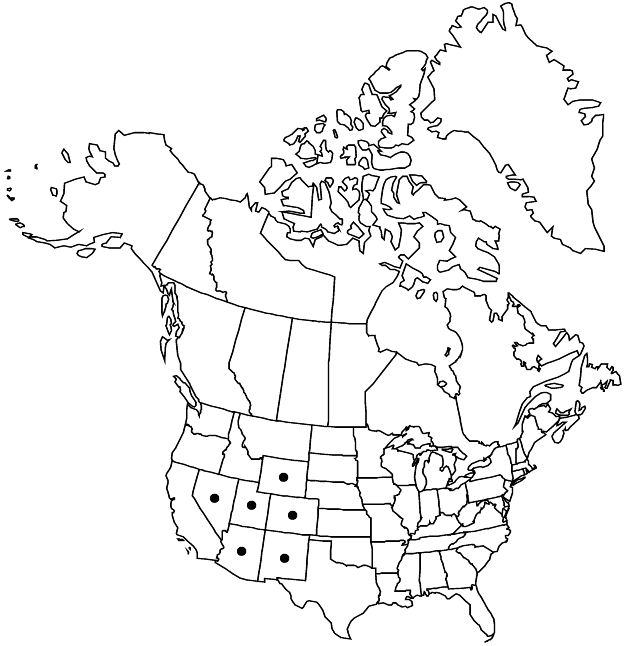Rosa woodsii subsp. puberulenta
Novon 20: 48. 2010.
Shrubs, 10–25+ dm. Stems openly branched; prickles usually present on distal stems and branches, infrastipular usually falcate, sometimes erect, declined, or introrse, usually subulate, 3–10 mm, internodal usually sparse or absent. Terminal leaflets usually broadly elliptic, 20–40 mm. Inflorescences 1 or 2(–5)-flowered. Sepals: abaxial surfaces eglandular, rarely sessile-glandular.
Phenology: Flowering May–Jul.
Habitat: Edges of streams, flats, riparian woodlands dominated by cottonwood and pine
Elevation: 1300–2400 m
Distribution

Ariz., Colo., Nev., N.Mex., Utah, Wyo.
Discussion
Subspecies puberulenta is the predominant Rosa occurring on bottomlands throughout the Colorado Plateau, extending at least as far as Lincoln and White counties, Nevada. Populations with comparable morphology that occur in northeastern California, Idaho, southeastern Oregon, and southeastern Washington might also belong here. The distribution of subsp. puberulenta overlaps those of all five other subspecies of R. woodsii. Diagnostic features include riparian habitat, relatively tall open habit, relatively prominent curved, declined, or introrse infrastipular prickles, and eglandular sepals.
Selected References
None.